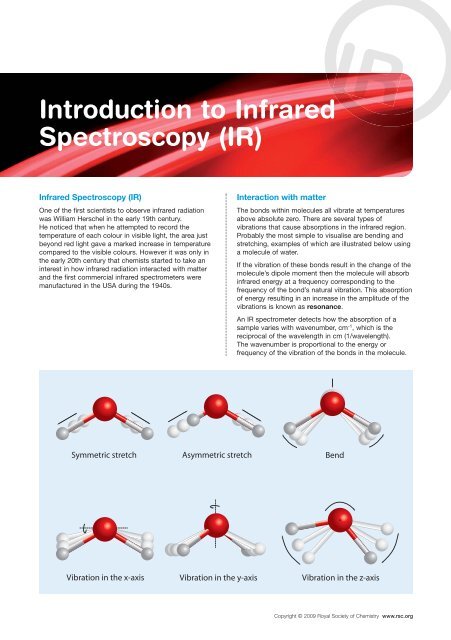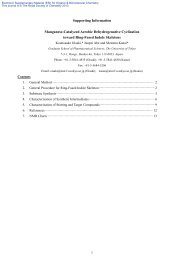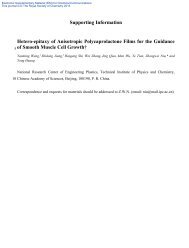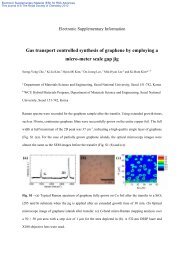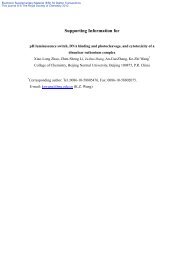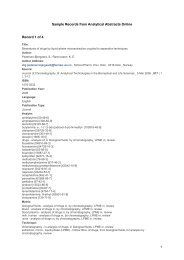Spectroscopy in a Suitcase - Royal Society of Chemistry
Spectroscopy in a Suitcase - Royal Society of Chemistry
Spectroscopy in a Suitcase - Royal Society of Chemistry
You also want an ePaper? Increase the reach of your titles
YUMPU automatically turns print PDFs into web optimized ePapers that Google loves.
Introduction to Infrared<br />
<strong>Spectroscopy</strong> (IR)<br />
IR<br />
Infrared <strong>Spectroscopy</strong> (IR)<br />
One <strong>of</strong> the first scientists to observe <strong>in</strong>frared radiation<br />
was William Herschel <strong>in</strong> the early 19th century.<br />
He noticed that when he attempted to record the<br />
temperature <strong>of</strong> each colour <strong>in</strong> visible light, the area just<br />
beyond red light gave a marked <strong>in</strong>crease <strong>in</strong> temperature<br />
compared to the visible colours. However it was only <strong>in</strong><br />
the early 20th century that chemists started to take an<br />
<strong>in</strong>terest <strong>in</strong> how <strong>in</strong>frared radiation <strong>in</strong>teracted with matter<br />
and the first commercial <strong>in</strong>frared spectrometers were<br />
manufactured <strong>in</strong> the USA dur<strong>in</strong>g the 1940s.<br />
Interaction with matter<br />
The bonds with<strong>in</strong> molecules all vibrate at temperatures<br />
above absolute zero. There are several types <strong>of</strong><br />
vibrations that cause absorptions <strong>in</strong> the <strong>in</strong>frared region.<br />
Probably the most simple to visualise are bend<strong>in</strong>g and<br />
stretch<strong>in</strong>g, examples <strong>of</strong> which are illustrated below us<strong>in</strong>g<br />
a molecule <strong>of</strong> water.<br />
If the vibration <strong>of</strong> these bonds result <strong>in</strong> the change <strong>of</strong> the<br />
molecule’s dipole moment then the molecule will absorb<br />
<strong>in</strong>frared energy at a frequency correspond<strong>in</strong>g to the<br />
frequency <strong>of</strong> the bond’s natural vibration. This absorption<br />
<strong>of</strong> energy result<strong>in</strong>g <strong>in</strong> an <strong>in</strong>crease <strong>in</strong> the amplitude <strong>of</strong> the<br />
vibrations is known as resonance.<br />
An IR spectrometer detects how the absorption <strong>of</strong> a<br />
sample varies with wavenumber, cm -1 , which is the<br />
reciprocal <strong>of</strong> the wavelength <strong>in</strong> cm (1/wavelength).<br />
The wavenumber is proportional to the energy or<br />
frequency <strong>of</strong> the vibration <strong>of</strong> the bonds <strong>in</strong> the molecule.<br />
Symmetric stretch Asymmetric stretch Bend<br />
Vibration <strong>in</strong> the x-axis Vibration <strong>in</strong> the y-axis Vibration <strong>in</strong> the z-axis<br />
Copyright © 2009 <strong>Royal</strong> <strong>Society</strong> <strong>of</strong> <strong>Chemistry</strong> www.rsc.org


